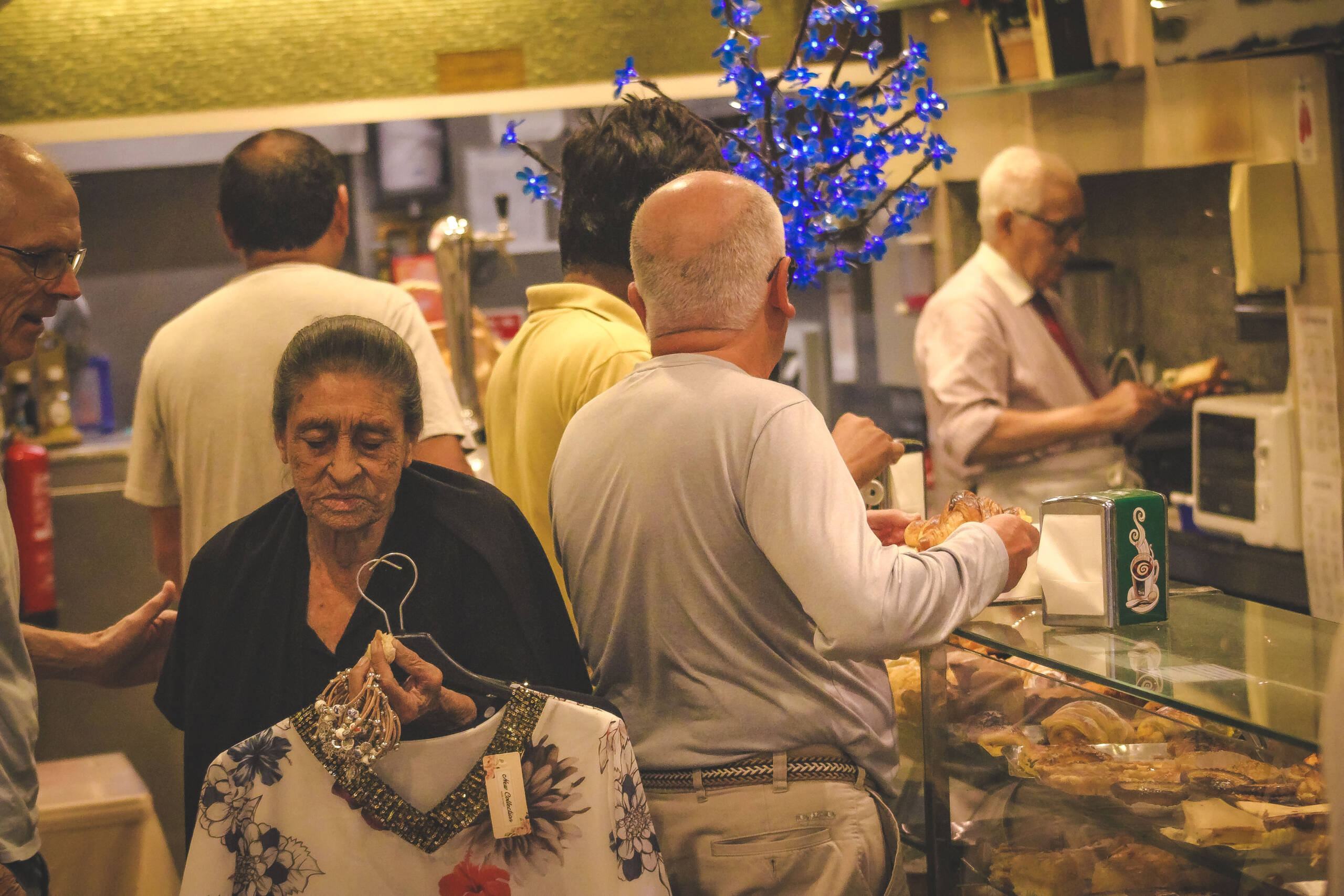This photo feels like a slice of daily life, the kind of moment that tourists rarely stumble into because it isn’t dressed up for visitors. You can almost hear the clinking of cups and the low hum of conversation in the small café or bakery. The counter glass is full of pastries—flaky, uneven, a bit rustic—which means they were probably baked right there, not engineered for Instagram. Behind the counter, an elderly man in a white shirt and red tie slices bread with the quiet precision of someone who has done this ritual every day for decades.

In the middle of the frame, the small details speak volumes: a woman in dark clothing holding up a floral blouse on a hanger, her face lined with years and memories, standing amid people queuing for coffee and croissants. It’s a slightly odd mix—food and clothes in the same space—but that’s part of the charm. In some neighborhoods, cafés are not just cafés; they double as community hubs, little places where commerce and conversation overlap. A man at the counter clutches his pastries on a plate like they’re an old routine, while behind him, the fake-blue blossoms of a plastic light tree glow with a slightly kitschy but warm touch.
It’s not glamorous, not staged, but that’s the point. Eating where the locals eat is rarely about perfect settings or design-forward interiors. It’s about stepping into their rhythm, where no one is performing for tourists, where the food is made for regulars who will complain if it isn’t good, and where a sense of continuity lives in the daily transactions. These are the places that remind you that travel isn’t only about monuments and sights—it’s about learning the tempo of ordinary life. And sometimes, the best memory you’ll take home is just a simple pastry, eaten shoulder to shoulder with strangers who didn’t even notice you were there.
Leave a Reply